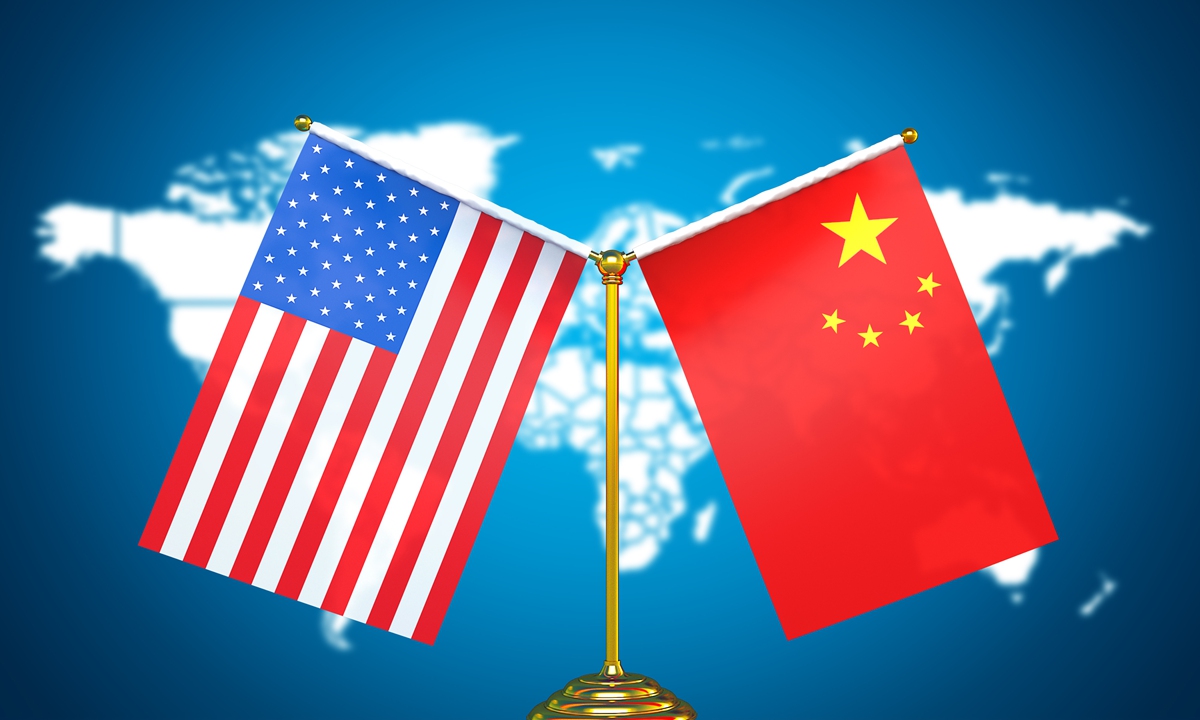
China US Photo: VCG
Bilateral trade between China and the US grew by 10.1 percent year-on-year in the first eight months of 2022, according to official data on Wednesday, indicating that strong complementarities remain despite Washington's push for decoupling.
China-US trade rose by 10.1 percent to 3.35 trillion yuan ($480 billion) in the first eight months, data released by the General Administration of Customs showed. The US was China's third-largest trading partner after the Association of Southeast Asian Nations (ASEAN) and the EU.
The growth rate was slightly lower than that of previous months. China-US trade rose by 11.8 percent in yuan terms in the first seven months of this year.
The growth rate of China-US trade is on par with that of China's total foreign trade in the first eight months of 2022. China's overall foreign trade totaled 27.3 trillion yuan in the first eight months, an increase of 10.1 percent on a yearly basis.
"The data reflects the complementarities of the two countries in general, and it hasn't changed," Gao Lingyun, an expert at the Chinese Academy of Social Sciences in Beijing, told the Global Times on Wednesday, adding that it is normal to see slight fluctuations in the monthly figures.
In the first eight months of this year, China's exports to the US rose 12.9 percent to 2.5 trillion yuan, while imports rose 1.6 percent on a yearly basis. China's trade surplus with the US narrowed to $36.77 billion in August from $41.5 billion in July, according to Reuters' calculations based on customs data on Wednesday.
Although the surplus has been narrowing, US demand for Chinese goods is still strong, which boosted exports from China to the country, Tian Yun, a Beijing-based economist, told the Global Times on Wednesday.
Data from the US Bureau of Economic Analysis under the Department of Commerce released on Wednesday said that the US' deficit with China was $34.4 billion in July, narrowing from $36.9 billion in June.
Despite political tensions between the two countries, bilateral trade is structural and determined by markets and businesses, instead of politicians, Tian added.
However, Tian expressed caution about the impact of the US Fed's possible super-sized rate hike in September, which would pose a challenge in the coming months to bilateral trade.
As the US' midterm elections in November approach, the Biden administration has escalated its tough stance on China, announcing that it will keep additional tariffs on Chinese imports in place, and further restrict chip-related exports to China.
The Office of the US Trade Representative said that since it had received requests from companies and other interested parties to maintain the Section 301 tariffs imposed by former president Donald Trump, it will start a formal review of the tariffs, a process that could take months, Reuters reported on Saturday.
The US government also moved to further restrict China's access to advanced semiconductor products and technology, placing seven more Chinese entities in the aerospace sector on its export control list late in August. It also ordered Nvidia and AMD recently to stop providing high-end artificial intelligence and supercomputing microchips to Chinese companies.
Mao Ning, a spokesperson for the Chinese Foreign Ministry, said on Monday that the US has been stretching the concept of national security to hamper China-US business ties and sci-tech exchanges.
This behavior goes against the principles of the market economy, as well as international economic and trade rules, and it undercuts global confidence in the US business environment and will backfire on the US, Mao said.


